Abandoned History: The Life and Times of Edsel, a Ford Alternative by Ford (Part IX)

We return to our Edsel coverage today during the second model year of the company’s entry-level car, the Ranger. When it debuted amongst the six other Edsel models in 1958 it was the cheapest and the least ornamented of them all. However, it was still more expensive than the nicer Fairlane 500 upon which it was based, and indeed priced similarly to a more upscale Mercury, the Medalist.
Though it was the best-selling Edsel of 1958, it was criticized for its styling (much like the rest of the line). Ford listened to the feedback and made styling changes for 1959 which toned Ranger’s looks down quite a bit. The ‘59 Ranger also received a lengthened wheelbase that it shared with the more expensive Edsel Corsair. With its new platform and partially new sheet metal, how would the Ranger fare in ‘59?
Despite its poor first-year sales, Ford increased the Ranger’s price considerably for 1959. Recall that in 1958 the base pillared models asked $2,484 ($25,723 adj.) while hardtops started at $2,643 ($27,369 adj.). The following year, the base four-door sedan asked $2,685 ($27,421 adj.), while the four-door hardtop was $2,760 ($28,187 adj.). Coupe pricing was even higher, with the hardtop two-door commanding $2,690 ($27,472 adj.).
In comparison, the 1959 Fairlane did not increase its price, and remained between $2,360 and $2,600 ($24,102 to $26,553 adj.) and made most versions cheaper than the Ranger. The short-lived Mercury Medalist was replaced by the more upmarket Monterey in 1959, with all-new styling. It was only slightly more expensive than the Ranger and asked between $2,770 and $3,150 ($28,289 to $32,170 adj.), but that highest figure was for the luxurious convertible.
The changes made to the Ranger for 1959 should be considered in context to the greater changes that occurred that year at Edsel. With its new slimmer lineup of just three cars, Ranger needed to capture buyers who would’ve previously purchased the more expensive Pacer. In addition, the 63,110 sales the company managed in 1958 were a fairly catastrophic result, and that needed to change too.
Unfortunately, Edsel’s popularity slipped from its debut year low, down to 44,891 overall in 1959. However, the edits to the Ranger most certainly succeeded as it sold much better than it had in 1958. Over 67 percent of the Edsels sold in 1959 were Rangers. Once again, the cheapest body style was the most popular: the four-door sedan nearly doubled its sales and sold 14,063 copies (7,414 in 1958). The only other model to increase its sales was the two-door sedan, which found 7,778 customers over the prior year’s 4,615.
The remaining two body styles both lost sales in 1959. The two-door hardtop was previously the second-best-selling Ranger with 6,005 sales but sold 5,966 in 1959. Finally, the expensive four-door hardtop was almost nobody’s favorite. Its slow 1958 sales figure of 3,667 fell to 2,451 in 1959.
No matter how the math was done, the Ranger was yet again a big failure against its sibling the Fairlane. Ford sold 178,800 Fairlanes in 1959, with styling that was old hat and in its final model year. Yet again, the executives at Edsel needed to take drastic action!
In the lens of history, the drastic action Ford took seemed to be the most obvious course. For 1960 the Ranger was new, yet again. This time it was much more closely associated with the successful Fairlane, which entered its third generation in 1960.
Ranger was absent from any association with the mid-market Corsair in 1960 because it was canceled. That meant for 1960 the Ranger headed to dealerships as the only Edsel sedan model. The only other Edsel in 1960 was the mid-level Villager wagon. Ranger would need to pick up sales from all the ill-fated Edsel sedans of yore.
On the Ford side of the house, the Fairlane’s success meant its range was due for expansion. Beginning in 1960, the Fairlane took over for the Custom 300 line, while the Fairlane 500 was demoted to a mid-level offering. Newly available as Ford’s flagship full-size was the Galaxie.
Galaxie appeared in 1959 as a top trim of the Fairlane 500, as Ford prepared to rework the lineup. 500 Galaxie was officially introduced in late 1958 and appeared at dealers during the ‘59 model year. It became its own model in 1960 and was slightly less bedazzled than the chrome and gingerbread looks of the ‘59.
Though the Ranger, Fairlane, and Galaxie were all on the same chassis, for whatever product differentiation reasons the Ranger had an inch extra in wheelbase over its siblings: 120 inches versus their 119”. Edsel used a slightly longer body too, which spanned 216 inches over the 213.7 inches of the Fords. In more weirdness, Ford’s models were 81.5 inches wide, while the Ranger was 79.8 inches in width.
One win for the new Ranger was a boost in available body styles. Excluding a wagon, the Ranger benefited from the Galaxie’s body lineup. Ranger was offered with two doors as sedan, hardtop, and convertible, and with four doors as a standard sedan or hardtop.
Normally the comparisons would stop there, but Ford offered another competing option from its Mercury division in 1960. The larger Monterey introduced in 1959 continued in 1960 and was priced about the same as the Ranger. It rode on a longer 126-inch wheelbase and spanned 219.2 inches in 1960 with its revised styling (three more than the Ranger).
Adding to the mixed messaging between its divisions, the Ranger continued with a more limited engine offering than the Fairlane. Edsels were equipped with the 223 cubic-inch (3.7L) Mileage Maker inline-six, or the 292 cubic-inch (4.8L) old Y-block V8. Top spec was once again the 361 (5.9L) FE series V8.
The Fairlane was available with many different engines dependent upon trim but shared only the 223 Mileage Maker I6 with Ranger. Its other engines included a 292 cubic inch V8 from the Thunderbird, which was more modern than the Y-block in the Ranger. Two more V8s from the Thunderbird were on offer too, and included a 352 (5.8L) and eventually a 390 (6.4L), though the latter did not arrive until 1961.
For the same Ranger money, the Monterey was offered with a V8 as standard, the 312 (5.1L) Y-block V8. Optionally Monterey was equipped with the 383 (6.3L) MEL V8, an upscale engine off-limits to Ford. With threats from every direction internally, it was shaping up to be a very mixed and confusing bag for the Edsel Ranger of 1960.
And that was the case before any styling was considered because the Ranger no longer used Edsel-specific body panels. Instead, Ford decided to distinguish its Edsel product via the use of different trim pieces and lighting elements. We’ll pick up next time with a review of the ‘60’s styling, as well as its pricing and sales in the face of stiff competition from Fairlane and Monterey.
[Images: Ford, Dealer]
Become a TTAC insider. Get the latest news, features, TTAC takes, and everything else that gets to The Truth About Cars first by subscribing to our newsletter.

Interested in lots of cars and their various historical contexts. Started writing articles for TTAC in late 2016, when my first posts were QOTDs. From there I started a few new series like Rare Rides, Buy/Drive/Burn, Abandoned History, and most recently Rare Rides Icons. Operating from a home base in Cincinnati, Ohio, a relative auto journalist dead zone. Many of my articles are prompted by something I'll see on social media that sparks my interest and causes me to research. Finding articles and information from the early days of the internet and beyond that covers the little details lost to time: trim packages, color and wheel choices, interior fabrics. Beyond those, I'm fascinated by automotive industry experiments, both failures and successes. Lately I've taken an interest in AI, and generating "what if" type images for car models long dead. Reincarnating a modern Toyota Paseo, Lincoln Mark IX, or Isuzu Trooper through a text prompt is fun. Fun to post them on Twitter too, and watch people overreact. To that end, the social media I use most is Twitter, @CoreyLewis86. I also contribute pieces for Forbes Wheels and Forbes Home.
More by Corey Lewis
Latest Car Reviews
Read moreLatest Product Reviews
Read moreRecent Comments
- TheMrFreeze So basically no manual transmissions in US cars after 2029.I just raised one finger in the general direction of NHTSB's main office. Guess which finger it is!
- TheMrFreeze Wife drives a Fiat 500 Turbo 5-speed (135hp vs. 160 in the Abarth), it's a lot of fun to drive and hasn't given us any headaches. Maintenance on it is not as bad as you'd think for such a cramped engine compartment...Fiat did put some thought into it in that regard. Back seat is...cramped...but the front is surprisingly roomy for what it is.I honestly wouldn't mind having one myself, but yeah, gotta have a manual trans.
- Bkojote Tesla's in a death spiral right now. The closest analog would be Motorola circa 2007.The formula is the exact same. -Vocal CEO who came in and took credit for the foundation their predecessor while cutting said efforts behind successful projects.-A heavy reliance on price/margin cuts and heavy subsidies to keep existing stock moving. The RAZR became a $99 phone after starting out as a $399 phone, the same way a Model 3 is now a $25k car.-Increasing focus on BS projects over shipping something working and functional to distract shareholders from the failures of current products. Replace "iTunes Phone" (remember that?) with "Cybertruck" and when that's a dud focus on "Java-Linux" the same way they're now focusing "Robotaxis".-Increasingly cut away investment in quality-of-ownership things. Like Motorola, Tesla's cut cut cut away their development, engineering, and support teams. If you ever had the misfortune of using a Motorola Q you're familiar with just how miserable Tesla Autopilot is these days.-Ship less and less completed products as a preview of something new. Time and time again at CES/Trade Shows Motorola was showing half-working 'concept' devices. The Cybertruck was announced 5 years ago yet functionally is missing most of its features- and the ones it has don't work. And I mean basic stuff- the AWD logic is embarrassingly primitive. A lot of Tesla hyperbole focuses on either he's a 4D-chess playing genius visionary or all of Tesla's being propped up by gov't mandates. But the reality is this company hasn't delivered any meaningful product evolution in the better half of this past decade.
- Pig_Iron Stellantis is looking for excuses to close plants. Shawn Fain just gave them one. 🐹
- SCE to AUX Unresolved safety issues are a good reason to strike.






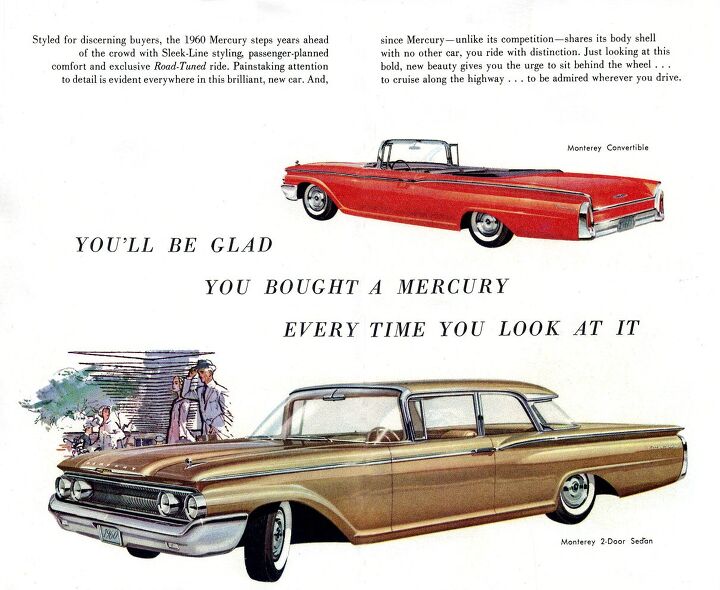

















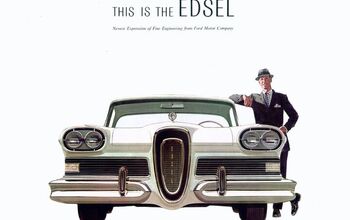
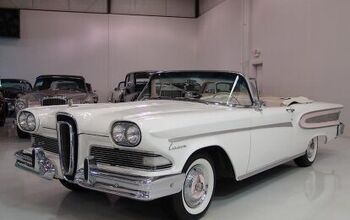
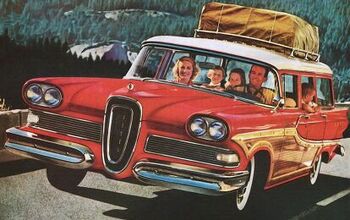
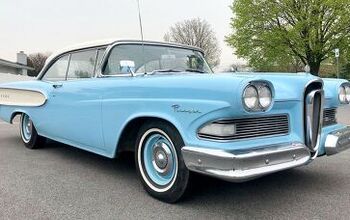










Comments
Join the conversation
Thinking back to childhood and dad's Chevrolet dealership, I do not remember a 1960 Edsel on the street in Johnstown, PA either that year, or the two or three following when it would have been a late model used car. Adding to that, I can't remember if Johnstown even had an Edsel dealership at that point, and there were no Edsels shown at the annual Johnstown Auto Show that winter.
Also, if dad had taken one in as a trade-in, he'd have certainly brought it home as one of the afternoon 'weird cars'. Nope to that evidence, either.
From going for the near-upscale to accenting the "new...nifty...and thrifty" just reinforced the fact that the doors to this scavenging sales flop should have been closed even earlier.